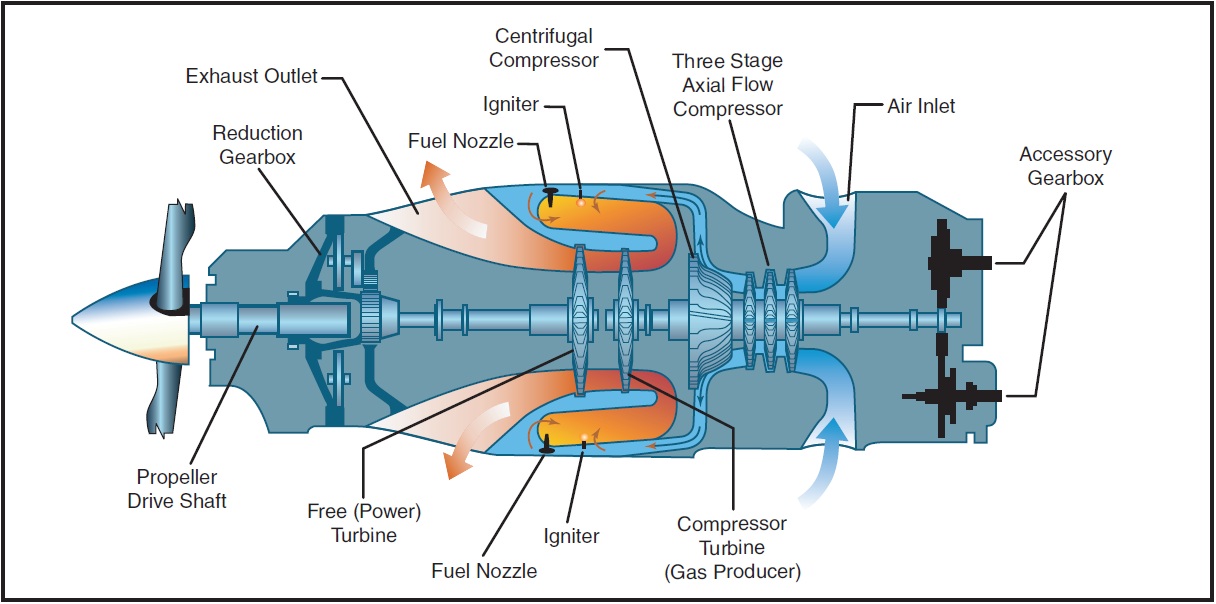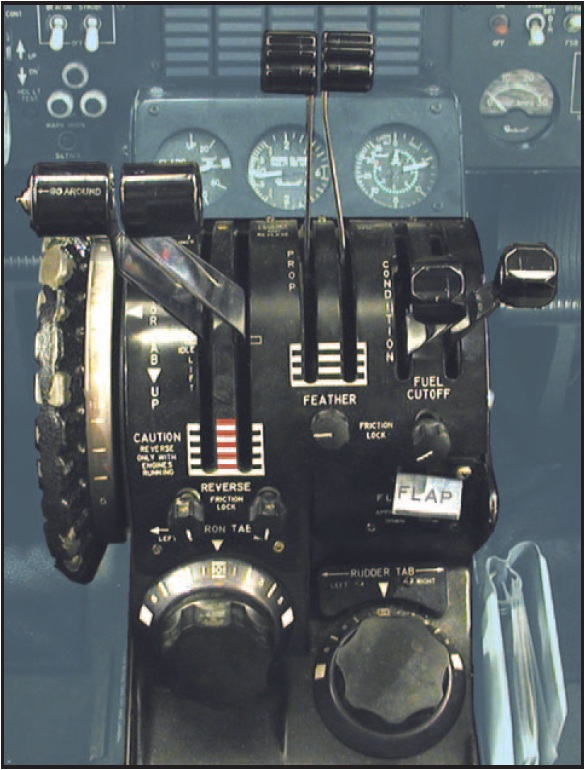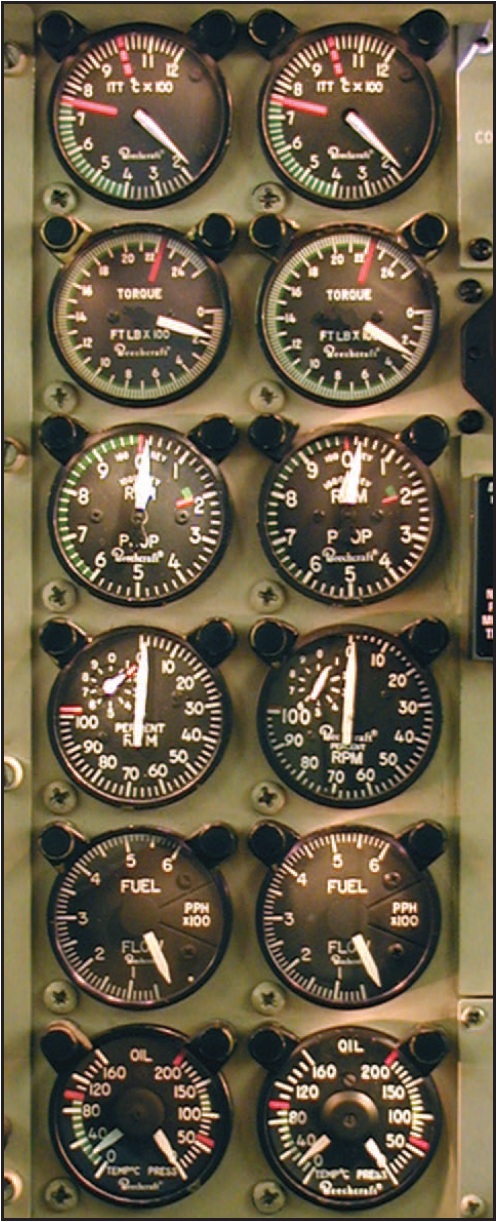
Chapter 14—Transition to Turbopropeller Powered Airplanes
Table of Contents
General
The Gas Turbine Engine
Turboprop Engines
Turboprop Engine Types
Fixed Shaft
Split-Shaft / Free Turbine Engine
Reverse Thrust and Beta Range Operations
Turboprop Airplane Electrical Systems
Operational Considerations
Training Considerations

SPLIT SHAFT/ FREE TURBINE ENGINE
In a free power-turbine engine, such as the Pratt & Whitney PT-6 engine, the propeller is driven by a separate turbine through reduction gearing. The propeller is not on the same shaft as the basic engine turbine and compressor. [Figure 14-5] Unlike the fixed shaft engine, in the split shaft engine the propeller can be feathered in flight or on the ground with the basic engine still running. The free power-turbine design allows the pilot to select a desired propeller governing r.p.m., regardless of basic engine r.p.m.

Figure 14-5. Split shaft/free turbine engine.
A typical free power-turbine engine has two independent counter-rotating turbines. One turbine drives the compressor, while the other drives the propeller through a reduction gearbox. The compressor in the basic engine consists of three axial flow compressor stages combined with a single centrifugal compressor stage. The axial and centrifugal stages are assembled on the same shaft, and operate as a single unit.
Inlet air enters the engine via a circular plenum near the rear of the engine, and flows forward through the successive compressor stages. The flow is directed outward by the centrifugal compressor stage through radial diffusers before entering the combustion chamber, where the flow direction is actually reversed. The gases produced by combustion are once again reversed to expand forward through each turbine stage. After leaving the turbines, the gases are collected in a peripheral exhaust scroll, and are discharged to the atmosphere through two exhaust ports near the front of the engine.
A pneumatic fuel control system schedules fuel flow to maintain the power set by the gas generator power lever. Except in the beta range, propeller speed within the governing range remains constant at any selected propeller control lever position through the action of a propeller governor.
The accessory drive at the aft end of the engine provides power to drive fuel pumps, fuel control, oil pumps, a starter/generator, and a tachometer transmitter. At this point, the speed of the drive (N1) is the true speed of the compressor side of the engine, approximately 37,500 r.p.m.
Ch 14.qxd 5/7/04 10:09 AM Page 14-6

Figure 14-6. Powerplant controls—split shaft/free turbine engine.
Powerplant (engine and propeller) operation is achieved by three sets of controls for each engine: the power lever, propeller lever, and condition lever. [Figure 14-6] The power lever serves to control engine power in the range from idle through takeoff power. Forward or aft motion of the power lever increases or decreases gas generator r.p.m. (N1) and thereby increases or decreases engine power. The propeller lever is operated conventionally and controls the constant-speed propellers through the primary governor. The propeller r.p.m. range is normally from 1,500 to 1,900. The condition lever controls the flow of fuel to the engine. Like the mixture lever in a piston-powered airplane, the condition lever is located at the far right of the power quadrant. But the condition lever on a turboprop engine is really just an on/off valve for delivering fuel. There are HIGH IDLE and LOW IDLE positions for ground operations, but condition levers have no metering function. Leaning is not required in turbine engines; this function is performed automatically by a dedicated fuel control unit.
Engine instruments in a split shaft/free turbine engine typically consist of the following basic indicators. [Figure 14-7]- • ITT (interstage turbine temperature) indicator.
- • Torquemeter.
- • Propeller tachometer.
- • N1 (gas generator) tachometer.
- • Fuel flow indicator.
- • Oil temperature/pressure indicator.

Figure 14-7. Engine instruments—split shaft/free turbine engine.
The ITT indicator gives an instantaneous reading of engine gas temperature between the compressor turbine and the power turbines. The torquemeter responds to power lever movement and gives an indication, in foot-pounds (ft/lb), of the torque being applied to the propeller. Because in the free turbine engine, the propeller is not attached physically to the shaft of the gas turbine engine, two tachometers are justified—one for the propeller and one for the gas generator. The propeller tachometer is read directly in revolutions per minute. The N1 or gas generator is read in percent of r.p.m. In the Pratt & Whitney PT-6 engine, it is based on a figure of 37,000 r.p.m. at 100 percent. Maximum continuous gas generator is limited to 38,100 r.p.m. or 101.5 percent N1.
The ITT indicator and torquemeter are used to set takeoff power. Climb and cruise power are established with the torquemeter and propeller tachometer while observing ITT limits. Gas generator (N1) operation is monitored by the gas generator tachometer. Proper observation and interpretation of these instruments provide an indication of engine performance and condition.
PED Publication